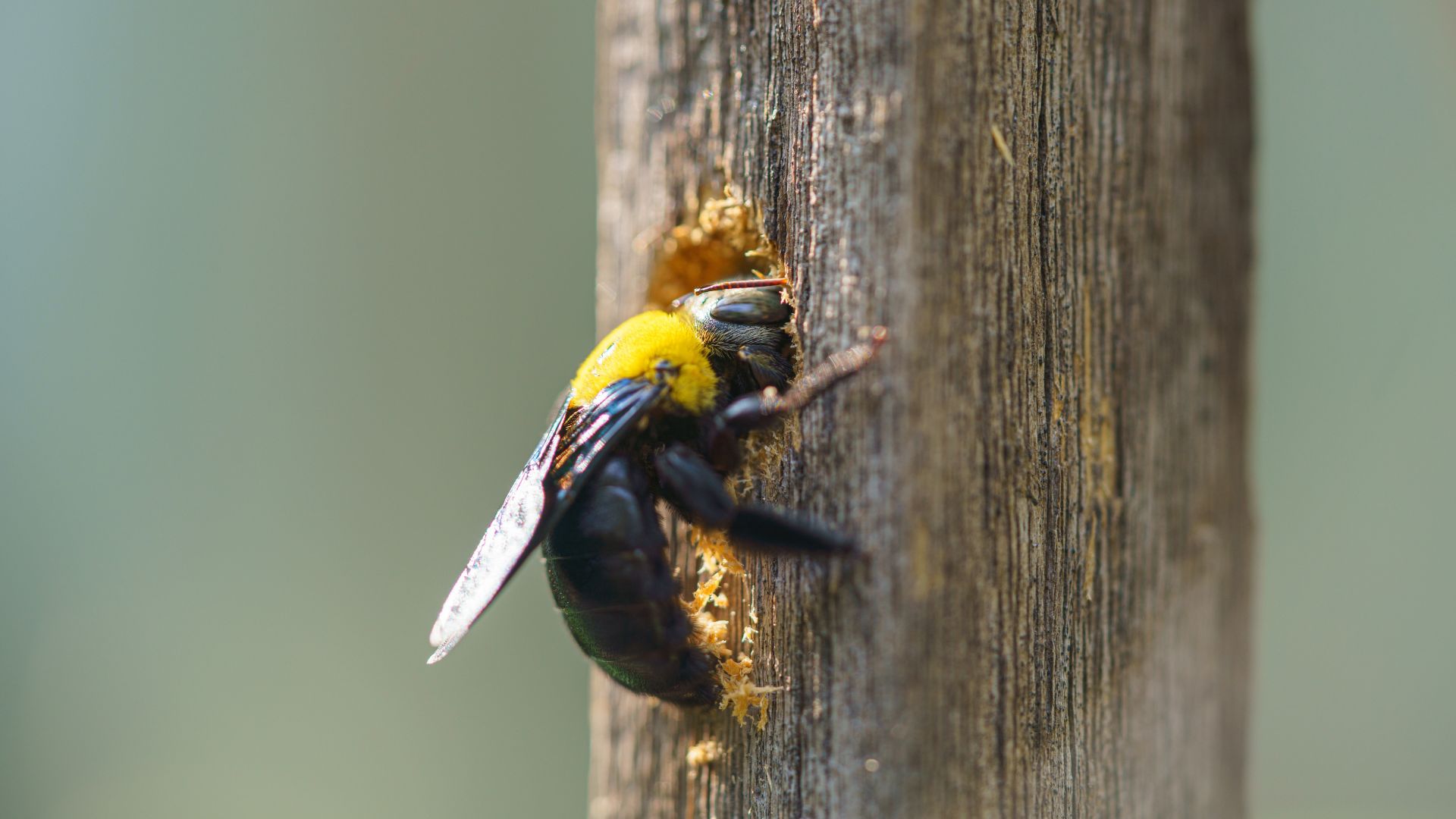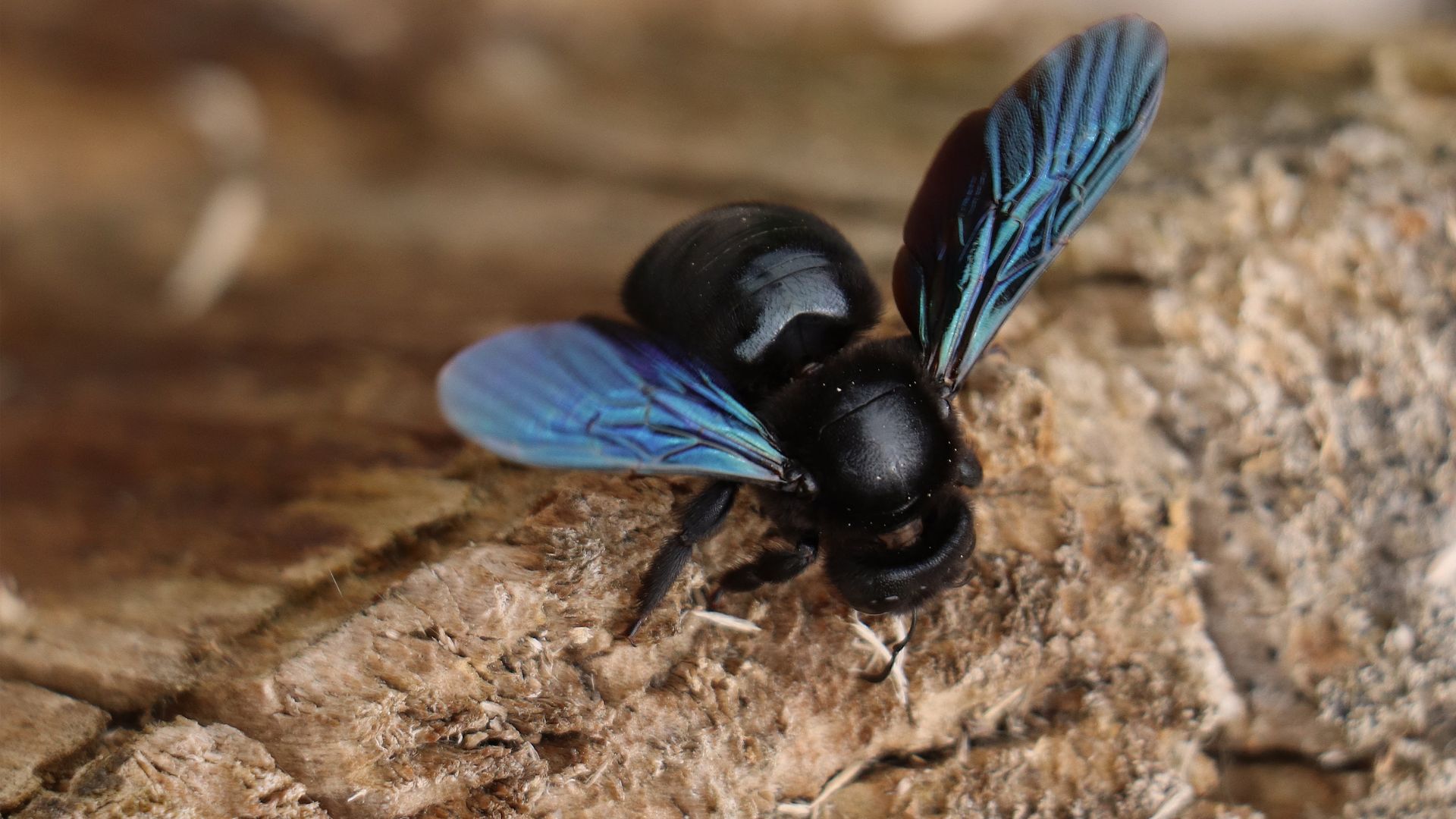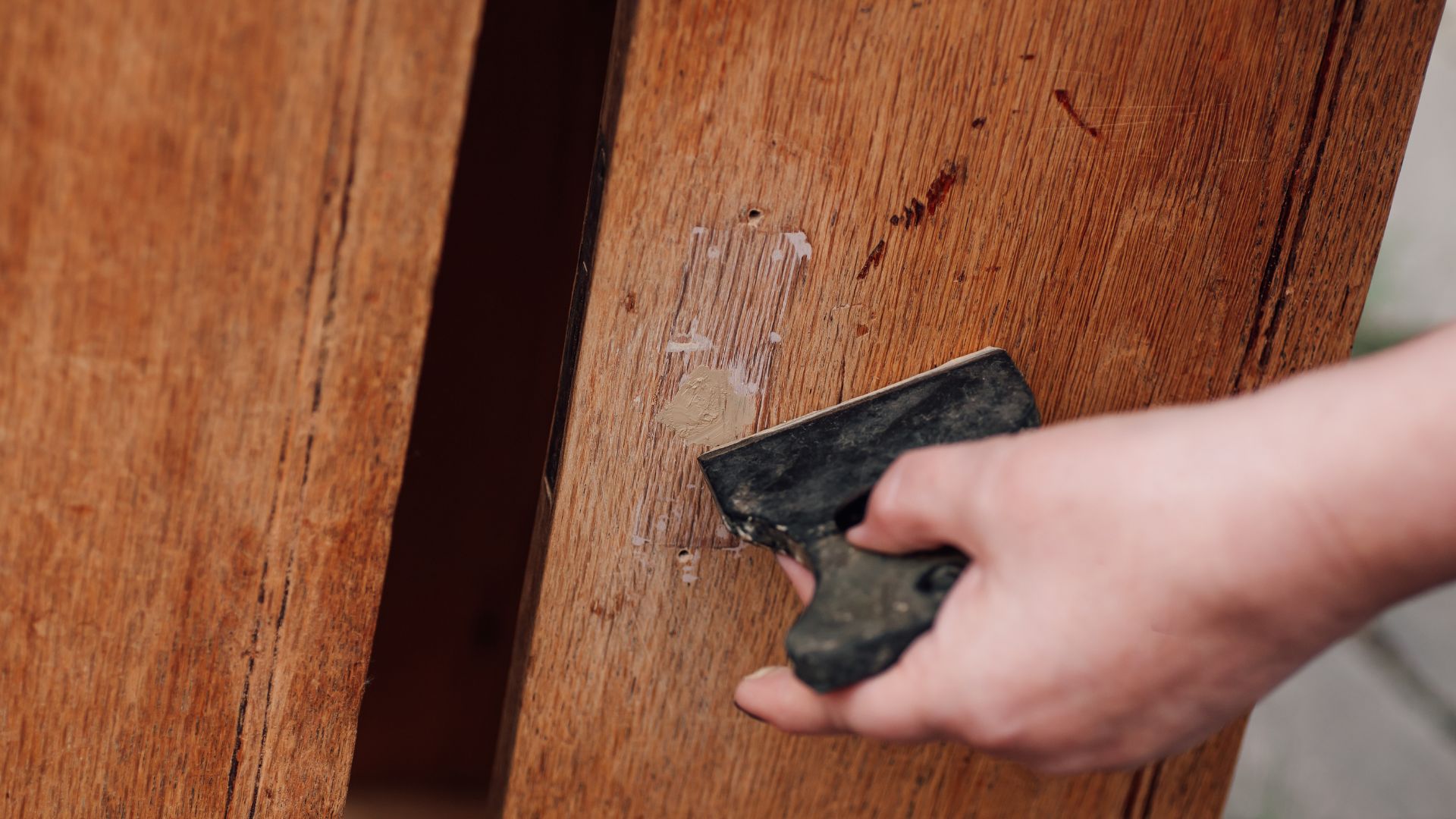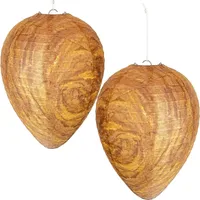How to get rid of carpenter bees: 7 deterrents for your home or yard
Noticing holes in the wood around your home? You may have carpenter bees taking up residence. Here’s how to deter them.

If you notice holes in wood around your home, you'll probably have carpenter bees. These peaceful and non-aggressive insects will favor your decking or furniture, and if left untreated over a period of time, they can cause rot, water retention, and decay. If there are a lot of holes, this damage can be even more devastating.
Unlike other pollinators such as honeybees and bumblebees, carpenter bees don’t live in hives. For carpenter bees, their home of choice is, unfortunately, tunnels they create by burrowing into wood around your home and yard.
Even though carpenter bees can cause mischief, they are still great pollinators, so it’s best to use methods to deter the bees rather than kill them. Using chemicals such as insecticides can also harm the other wild pollinators around your home, as well as the environment. Especially if you're using these 5 plants to attract pollinators to your yard.
It’s advised then that you prioritize finding ways to deter carpenter bees from your home and yard, and luckily, we’ve collated a list to help do just that.
What are carpenter bees?

Carpenter bees are larger than your average honeybee or bumblebee. They’re also black and shiny with the only yellow part being the thorax. The male carpenter bees also have a white spot on their faces, if you can get close enough to see.
They’re wood-drilling insects that live a solitary life, contrary to the usual hive-loving bees. But, much like other species of bees, they are dedicated to pollinating, so finding natural non-harmful ways to deter them from your home and yard is preferred.
How to spot carpenter bee damage
The best way to spot damage from a carpenter bee is holes in any of the wood around your home or yard. They’ll bury into your wood by creating a small hole and then hide within it to either lay their eggs or, if during the colder months, lone adult bees will often use them to overwinter.
Get instant access to breaking news, the hottest reviews, great deals and helpful tips.
If the damage goes untreated and the problem becomes an infestation, your wood will eventually rot and decay causing an even bigger problem over several years. Carpenter bees don’t eat the wood, so you may also find small piles of sawdust around the holes. If you hear drilling, find holes, or just notice an influx of shiny black bees around your home or yard, you may want to consider the preventative measures below.
1. Paint or stain wood

Carpenter bees may love wood, but they don’t like it when it’s been treated. Whether you use paint, stain, or varnish, carpenter bees will be put off by the chemicals and are less likely to drill. It’s no guarantee, but if you have any untreated wood in your home or yard, whether it’s furniture, decking, fencing, or window trim, treat it using our 5 ways to maintain your wooden fence as a guide and you’ll have more of a chance deterring the bees.
Even if the chemicals don’t put them off, carpenter bees will find it a lot harder to tunnel when there’s a layer separating them from the wood. The type of wood can also deter carpenter bees. While soft woods like pine are their favorite, hardwoods like cherry, oak, walnut, and hickory are solid alternatives to incorporate into your yard as it’s harder for them to tunnel into.
2. Use a citrus or almond oil spray
The scent of citrus is an effective repellent for many pests, carpenter bees included. They hate the smell and fortunately, it’s a cheap and natural way to deter them from your home and yard without having to cause them any harm.
To create your own spray, simply boil sliced citrus fruit such as orange, lemon, or lime in water for around 10 to 15 minutes and then pour the solution into a spray bottle. Alternatively, you can add in a few drops of citrus oil into water for the same effect. Spray it around wooded areas or straight into any carpenter bee holes a few times a week across several weeks, especially in the spring.
You can also try almond oil drops into water too as carpenter bees also hate this. Both almond and citrus oil sprays are part of our 7 natural hacks to make your home smell good without chemicals too.
3. Create a fake wasp nest
In the same way hanging up a fake wasp nest in your yard is a hack for getting rid of wasps, carpenter bees will avoid nesting in your yard if they think wasps are already there. You can buy them ready-made or you can make one yourself with an empty paper bag and some string.
To make one, simply inflate a paper bag fully and then tie one end closed, into an upside-down hot air balloon shape. Use the string to hang it in the eaves of your home, from a tree, or on your fence. Wherever you decide to hang it, make sure it’s sheltered from the rain as it’ll break down the paper if wet. Fake wasp nests will deter carpenter bees from taking up new residence, but if they’re already there, it won’t make them leave.
Wasp Nest Decoy - 2 Pack: $8.50 @ Amazon
Invest in a decoy wasp nest to prevent pests from setting up camp in your yard. This two pack from Amazon is only $8.50, a worthy investment for the peace of mind it gives.
4. Use noise and vibrations
Carpenter bees find noise and, in turn, the vibrations caused by noise very disruptive. A natural way to deter them then is to place speakers and play music loudly nearby to where they’re nesting, or by hanging wind chimes. The vibrations caused by the loudness may well influence them to move their nest elsewhere.
Be sure to let your neighbors know if you’re planning on doing this though, as the noise could bother them too.
5. Seal the holes

If you’ve already noticed carpenter bees have managed to tunnel into wood within your home or yard, then it’s time to start sealing them up. You don’t want to trap the bees inside though, as the only crime they’re really committing is digging holes as they go about their otherwise harmless lives. The best time to seal these holes is when carpenter bees leave around August and September time to pollinate flowers and feed on nectar.
You can also spray a non-harmful bee repellent into the holes to encourage them to move out. Seal them up with wooden dowelling coated with wood glue, wood putty, steel wool, or caulk. You’ll also want to paint or stain over the holes to prevent them from coming back. Doing so will stop the female bees from returning after they’re pollinated and the adult bees from using them to over winter.
6. Buy them their own home
There are a few options here, depending on what works best for you and the carpenter bees that are trying to make your home theirs. Firstly, you can simply place scrap blocks of wood around your yard or home to encourage the carpenter bees to build their homes in them. Untreated softwood is their favorite, so they’ll be encouraged towards that and away from other sources.
You can also pre-drill your own holes for them in the wood. While it’s easier for the carpenter bees not to have to drill their own holes, they may prefer doing it. You can also buy a solitary bee house for them to nest inside. You may find that you need to widen the holes as they’re most likely too small as they’re often built for mason, leafcutter, or miner bees, rather than carpenter bees.
7. Use vinyl, aluminum, or fiber cement siding
Finally, if you find your carpenter bee problem keeps recurring, using vinyl, aluminum, or fiber cement siding on your home and on any rough exterior ends may be the answer. Carpenter bees, as we’ve established, like wood.
So, if you use something else or cover the wood up, you’re completely eliminating their opportunity to tunnel and bore holes into your home and yard. It can be a more expensive and extreme step, but even if you do it in smaller areas, it should deter the carpenter bees entirely.
More from Tom's Guide

Grace is a freelance journalist working across homes, lifestyle, gaming and entertainment. You'll find her writing for Tom's Guide, TechRadar, Space.com, and other sites. If she's not rearranging her furniture, decluttering her home, or relaxing in front of the latest streaming series, she'll be typing fervently about any of her much-loved hobbies and interests. To aid her writing, she loves to head down internet rabbit holes for an unprecedented amount of time.

